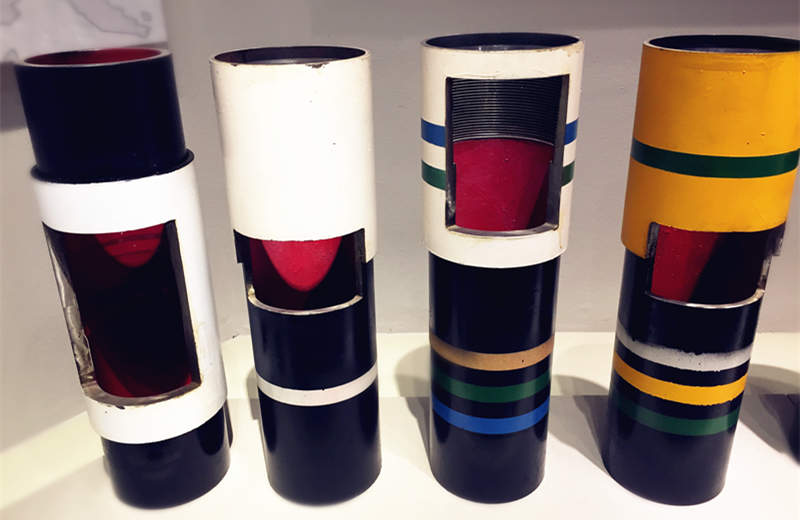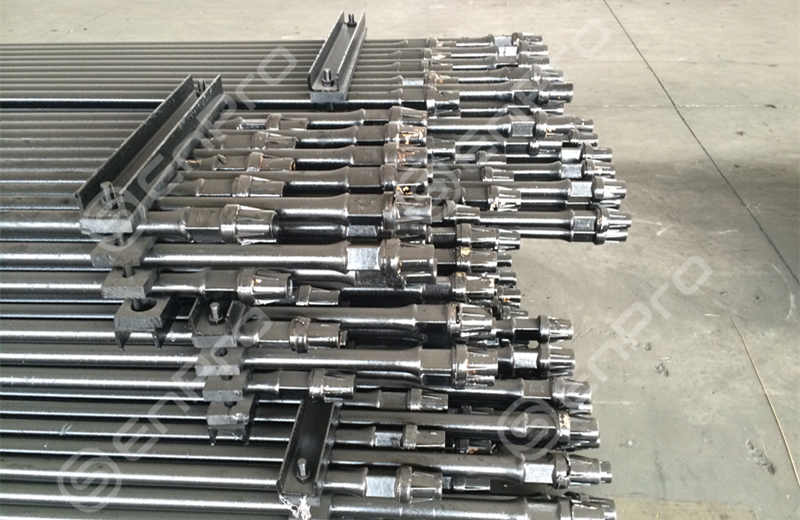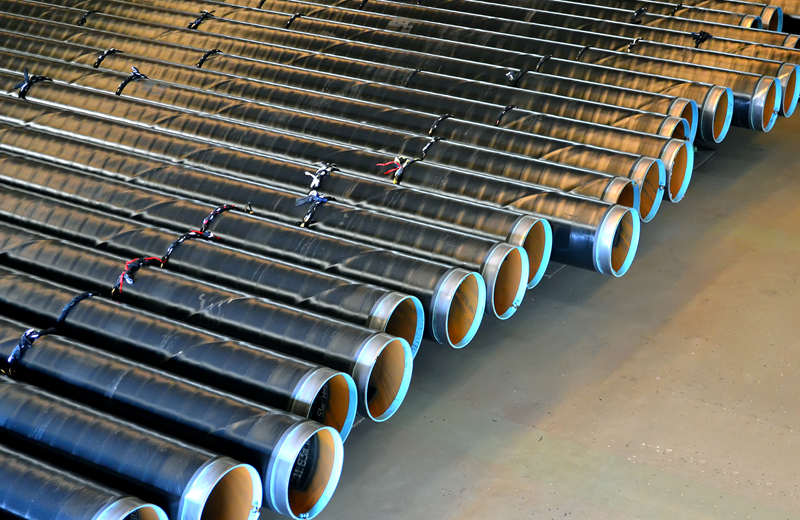Drill Pipe and Heavy Weight Drill Pipe
Drill pipe is an essential component of drilling rigs that are used to extract oil or other liquids from the ground. Unlike the extraction process, the drill pipe’s main function is to facilitate the movement of drilling fluids to the bit and back out again. This is done to minimize friction and heat accumulation. The drill pipe also transfers drilling torque to the drill bit, enabling the drilling process under the oil well. It must withstand various forces, including pulling, loading, pressing, torsion, and bending, making its strength requirements quite complex.
Enpro has Drill pipe and Heavy weight drill pipe for Sale
Standard: API 5DP, API SPEC 7-1
API 5DP Grade DZ50, E75, R780, X95, G105, S135
Range of Sizes: 2 3/8”, 2 7/8”, 3 1/2” 4”, 4 1/2”, 5”, 5 1/2” up to 6 5/8”
OD Range in mm: 60.3mm, 73mm, 88.9mm, 101.6mm, 114.3mm, 127mm, 139.7mm
Range of Thickness: 6.5mm to 12.7mm, or cutomized
Connection threads: NC26, NC31, NC38, NC40, NC46, NC50, 5 1/2FH.6 5/8FH.
Internal Upset: IU, EU, IEU
Length: R1, R2, R3
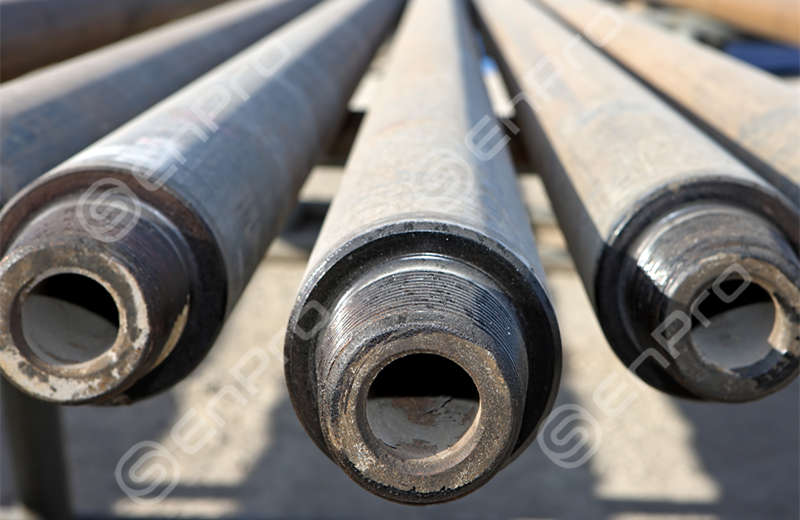
How to Work with Drilling Pipe
The drill rod is the tool used for transferring power in drilling operations. The drill string typically consists of various components such as the drill, drill collars, drilling pipe, stabilizers, special connectors, and Kelly. The main functions of the drill string are: (1) controlling the drill bit, (2) applying weight on bit (WOB), (3) transmitting power, (4) transporting drilling fluid, and (5) performing special operations like cement extrusion and handling underground accidents.
Drill Pipe Specifications
Drill Pipe Sizes and Weight
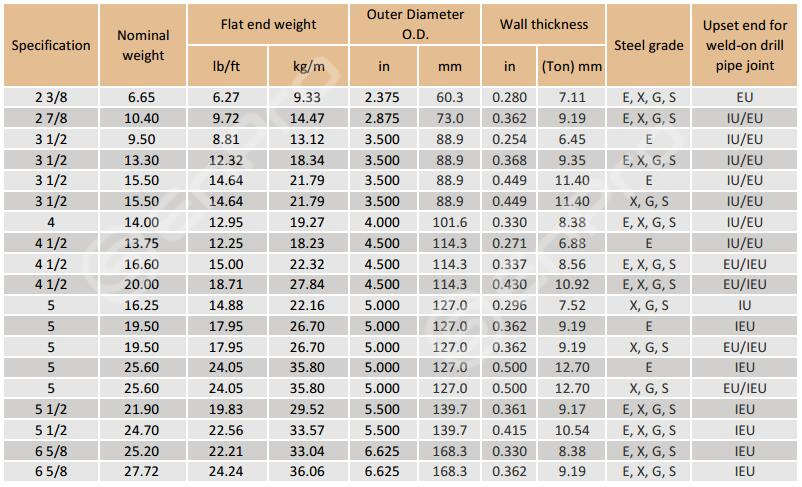
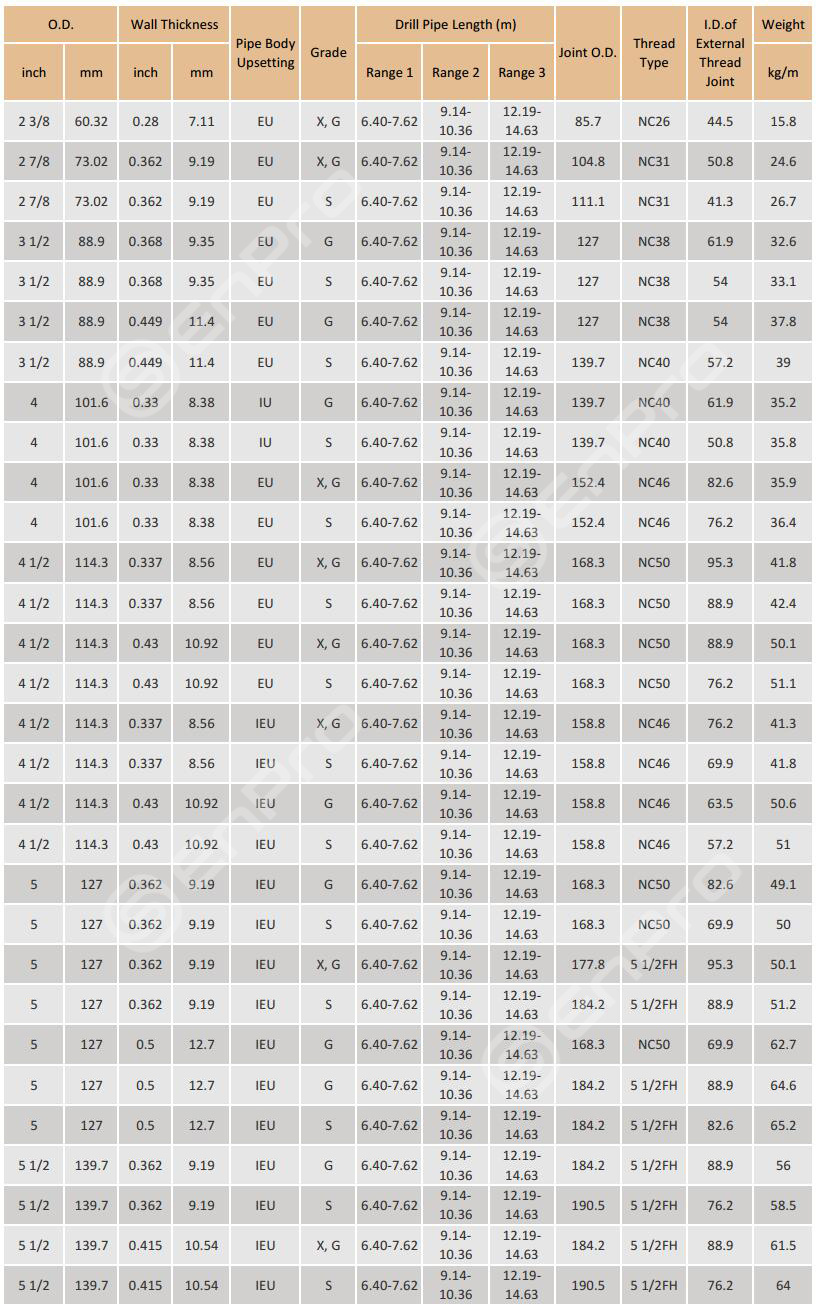
Mechanicl Properties and Capacity
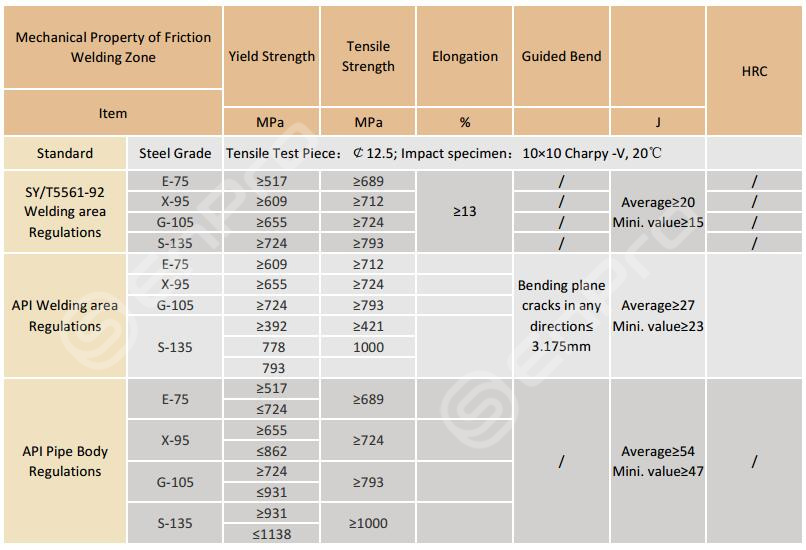
2 3/8”, 2 7/8” and 3 1/2” Drill Pipe for Common Use
In API 5DP specifciations, the common use OD are 2 3/8”, 2 7/8” and 3 1/2” drill pipes, these usually required in large amount of quantities in drilling activities.
Heavy Weight Drill Pipe
Heavy weight drill pipe, as defined by API SPEC 7-1, is a type of drilling pipe that falls between the weight of common drilling pipe and drill collars. It has a thicker wall compared to regular drilling pipe but is smaller than drill collars. The tube is connected to a special length-added drill pipe joint, and in the case of integral heavy weight drill pipe, the tube and tool joint are combined. This component is typically placed between the drill pipe and drill collar assemblies to prevent abrupt changes in the cross-section of the drill string and to minimize fatigue.
Heavy Weight Drill Pipe Types and Specifications
Integral Heavy Weight Drill Pipe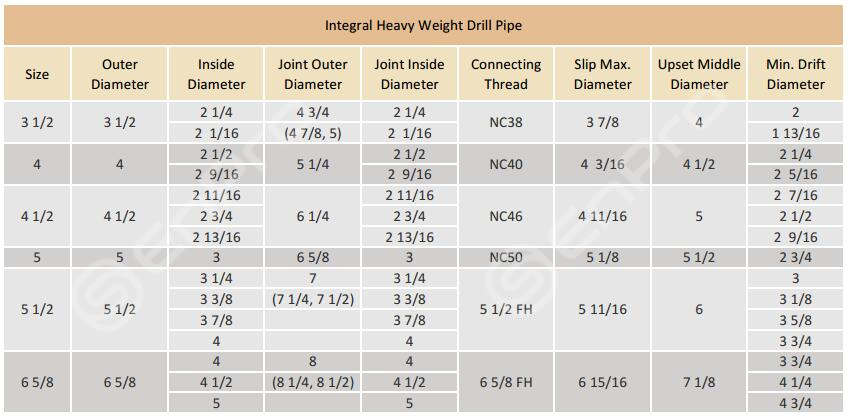
Spiral Weight Heavy Weight Drill Pipe
Welded Heavy Drill Pipe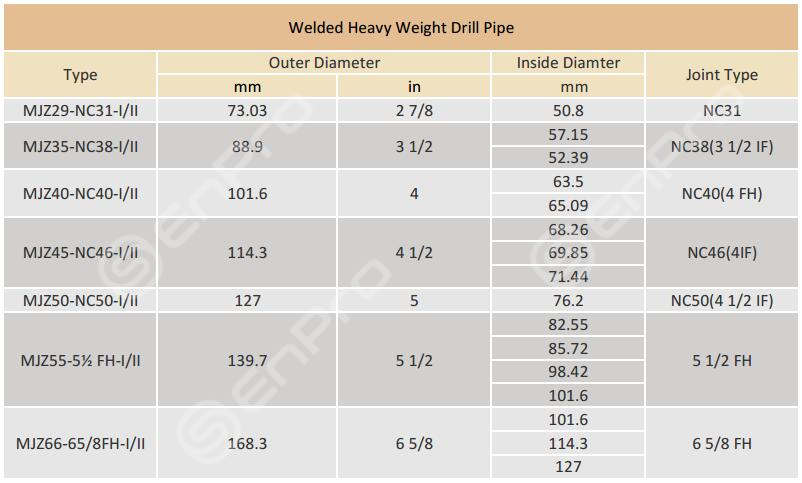
Heavy Drill Pipe Material Specifications and Mechanical Properties


Advantages of Heavy weight drill pipe
a. Heavy weight drill pipe could replace part of drill collar can reduce torque, improve load, and increase drilling capacity during deep well drilling.
b. To pick-up sub and safety clamp that not used during drilling operation, which is easy to operate and can save tripping time.
c. Drilling in high speed under low torque in directional wells and reduces the abrasion and fracture of string without differential pressure and sticking because of the lower steel grade than drill collar, small touching area with the well wall.
Using a drilling pipe on site effectively
In extensive drilling operations, it is common to connect multiple drill pipes together in order to reach greater depths. To ensure the durability and functionality of these pipes, certain factors are crucial. The metal used must possess exceptional strength to withstand the pressure and torque exerted during drilling without fracturing. Additionally, there is a preference for reusing these pipes, particularly the more costly ones. For drilling extremely deep wells, toughened steel is employed due to its superior resilience.
Once a pipe drill has been utilized in a drilling operation, it is transported to another site for a thorough inspection. The primary objective is to assess whether the apparatus remains sufficiently robust for future applications, prior to offering it for sale as a drill pipe. Experts employ a range of tools, including modified spherometers and ultrasonic metal testing equipment, to identify any weaknesses in the metal. The outcomes of these tests determine the classification of the drilling pipe. Unused pipes receive the N designation, while P is assigned to premium grade pipes. Pipes in various stages of wear are classified as C1, C2, or C3. Once a pipe’s score falls below C3, it is marked with a red band to indicate that it is now considered scrap metal.
In addition to inspecting the drill pipe, it is essential to examine the bottom hole assembly (BHA) for these specific drilling operations. The BHA is a tube-shaped component located near the drill bit, constructed from heavier and more robust metal materials.
How is drill pipe manufactured
Drill pipes are not initially created as solid metal sheets that are rolled into tubes. Instead, they are manufactured by welding three separate pieces together. These pieces consist of the tube itself, the box tool joint, and the pin tool joint. The manufacturing process begins with base tubes made of steel or aluminum. The ends of the tube undergo a process called upsetting, where the metal is roughened to create stronger bonds. Upsetting can be done internally, externally, or at cross sections, and different manufacturers utilize various types and sizes of steel pipe upset. Finally, the pipes are heat treated to ensure they possess the necessary strength.
During the manufacturing process, all essential pipe drill connectors and joint pieces undergo similar treatments. Connectors are modified to become either female or male box or pin threaded ends. In the final assembly of the pipe, the connectors at the joints are more susceptible to damage or failure. This is primarily because of the lower temperature tempering and the increased stiffness or brittleness of the metal. It is worth noting that stronger steel tends to be more brittle, so manufacturing plants meticulously adhere to precise measurements to prevent any failures during the drilling process.
When you’re in need of drill pipe for your drilling work, it’s important to understand how it’s made. A reliable supplier follows the best practices for choosing strong materials, crafting sturdy connections, and building joints that can handle high pressure. This ensures the best results in your drilling operations.
We are offering Drill Pipe and Heavy Weight Drill Pipe.
With sizes from 2 3/8 to 6 5/8, material grades E-75, X-95, G105, S135, threads type in NC26, NC31, NC38, NC40, CN46, NC50.


